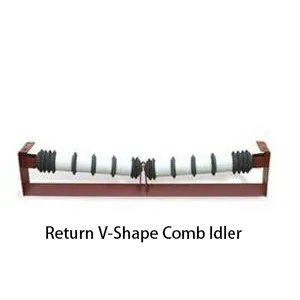 Afrikaans
Afrikaans  Albanian
Albanian  Amharic
Amharic  Arabic
Arabic  Armenian
Armenian  Azerbaijani
Azerbaijani  Basque
Basque  Belarusian
Belarusian  Bengali
Bengali  Bosnian
Bosnian  Bulgarian
Bulgarian  Catalan
Catalan  Cebuano
Cebuano  Corsican
Corsican  Croatian
Croatian  Czech
Czech  Danish
Danish  Dutch
Dutch  English
English  Esperanto
Esperanto  Estonian
Estonian  Finnish
Finnish  French
French  Frisian
Frisian  Galician
Galician  Georgian
Georgian  German
German  Greek
Greek  Gujarati
Gujarati  Haitian Creole
Haitian Creole  hausa
hausa  hawaiian
hawaiian  Hebrew
Hebrew  Hindi
Hindi  Miao
Miao  Hungarian
Hungarian  Icelandic
Icelandic  igbo
igbo  Indonesian
Indonesian  irish
irish  Italian
Italian  Japanese
Japanese  Javanese
Javanese  Kannada
Kannada  kazakh
kazakh  Khmer
Khmer  Rwandese
Rwandese  Korean
Korean  Kurdish
Kurdish  Kyrgyz
Kyrgyz  Lao
Lao  Latin
Latin  Latvian
Latvian  Lithuanian
Lithuanian  Luxembourgish
Luxembourgish  Macedonian
Macedonian  Malgashi
Malgashi  Malay
Malay  Malayalam
Malayalam  Maltese
Maltese  Maori
Maori  Marathi
Marathi  Mongolian
Mongolian  Myanmar
Myanmar  Nepali
Nepali  Norwegian
Norwegian  Norwegian
Norwegian  Occitan
Occitan  Pashto
Pashto  Persian
Persian  Polish
Polish  Portuguese
Portuguese  Punjabi
Punjabi  Romanian
Romanian  Russian
Russian  Samoan
Samoan  Scottish Gaelic
Scottish Gaelic  Serbian
Serbian  Sesotho
Sesotho  Shona
Shona  Sindhi
Sindhi  Sinhala
Sinhala  Slovak
Slovak  Slovenian
Slovenian  Somali
Somali  Spanish
Spanish  Sundanese
Sundanese  Swahili
Swahili  Swedish
Swedish  Tagalog
Tagalog  Tajik
Tajik  Tamil
Tamil  Tatar
Tatar  Telugu
Telugu  Thai
Thai  Turkish
Turkish  Turkmen
Turkmen  Ukrainian
Ukrainian  Urdu
Urdu  Uighur
Uighur  Uzbek
Uzbek  Vietnamese
Vietnamese  Welsh
Welsh  Bantu
Bantu  Yiddish
Yiddish  Yoruba
Yoruba  Zulu
Zulu conveyor system components
Conveyor system components play a crucial role in material handling across various industries. These systems are designed to transport products efficiently, ensuring smooth operations in manufacturing and logistics. Understanding the different components that make up a conveyor system is essential for optimizing its performance and reliability.
One of the primary components is the conveyor belt itself. This flexible, continuous loop of material is responsible for moving goods from one point to another. Conveyor belts can vary in material, with options including rubber, metal, and plastic, depending on the nature of the items being transported. The choice of belt material affects not only durability but also the friction and grip necessary for proper operation.
.
Supporting structures, such as frames and rollers, are essential for maintaining the integrity of the conveyor system. Frames provide stability and support for the entire assembly, while rollers facilitate smooth movement of the conveyor belt. Idler rollers, typically used to support the return side of the belt, help reduce friction and prolong the life of both the belt and the system.
conveyor system components

Sensors and controls enhance the functionality of conveyor systems. These components allow for automation and monitoring of the system's performance. For example, sensors can detect the presence of items on the belt, helping to prevent jams or overloads. Control systems enable operators to adjust speeds or initiate shutdowns in case of emergencies.
Additionally, safety features should not be overlooked. Emergency stop buttons, guards, and safety rails are vital for protecting operators and minimizing the risk of accidents in the workplace.
In conclusion, the efficiency and effectiveness of conveyor systems depend heavily on the integration and quality of their components. From the conveyor belt and drive system to supporting structures and safety features, each element plays a significant role in ensuring smooth and reliable material handling. As industries continue to evolve, so too will the technology behind conveyor systems, leading to even greater efficiency and productivity. Understanding these components is key for anyone involved in the design, maintenance, or operation of conveyor systems.
-
Revolutionizing Conveyor Reliability with Advanced Rubber Lagging PulleysNewsJul.22,2025
-
Powering Precision and Durability with Expert Manufacturers of Conveyor ComponentsNewsJul.22,2025
-
Optimizing Conveyor Systems with Advanced Conveyor AccessoriesNewsJul.22,2025
-
Maximize Conveyor Efficiency with Quality Conveyor Idler PulleysNewsJul.22,2025
-
Future-Proof Your Conveyor System with High-Performance Polyurethane RollerNewsJul.22,2025
-
Driving Efficiency Forward with Quality Idlers and RollersNewsJul.22,2025





























